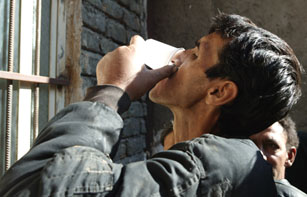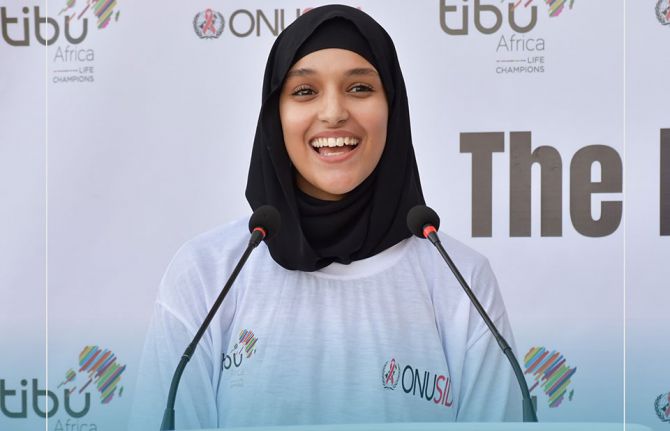
Feature Story
Middle East and North Africa ready to scale up harm reduction services in its response to AIDS
13 April 2011
13 April 2011 13 April 2011
A man receiving opioid substitution therapy as part of a harm reduction programme in the Islamic Republic of Iran. Credit: UNAIDS/P.Virot
Injecting drug use and the growing HIV epidemic in the Middle East and North Africa were the focus of the Harm Reduction 2011 conference that took place in Beirut, Lebanon from 3-7 April 2011
Some 1000 scientists, researchers, drug users, doctors and politicians from 80 countries participated in the first international drugs-related conference to be held in the Middle East and North African (MENA) region.
Discussions during the conference centred around the existence of legislation in the region that hinders the implementation of harm reduction programmes. Nearly one million people in the Middle East and North Africa (MENA) inject drugs. Injecting drug use is already the major mode of HIV transmission in Afghanistan, Pakistan, the Islamic Republic of Iran (more than 67% of registered cases) and Libya (up to 90% of cases). It is also significant in Oman and Bahrain and has growing incidence in Morocco and Egypt.
The region is slowly increasing availability of harm reduction programmes although countries are at different stages of introducing the different components of the harm reduction package. The Islamic Republic of Iran is a model—with a rapidly scaled-up plan to make available needles and syringes, opioid substitution therapy (OST), HIV testing and counseling, and sexually transmitted infection services. Morocco also has integrated harm reduction policies into its national AIDS strategic plan. Pilot drop-in centres with needle and syringe exchange are in place, and preparations for introducing OST are underway.
The government’s support for harm reduction measures such as the provision of Buprenorphine is based on our belief that the evidence for such a public health measure is irrefutable
Dr Walid Ammar, Director General of the Lebanese Ministry of Public Health.
The Lebanese Minister of Health announced during the conference the launch of a pilot programme consisting of the first ever legal sale of Buprenorphine in government hospitals for people who inject drugs. “The government’s support for harm reduction measures such as the provision of Buprenorphine is based on our belief that the evidence for such a public health measure is irrefutable—its implementation has helped to contain HIV and Hepatitis infections amongst injecting drug use communities in every country it has been introduced,” said Dr Walid Ammar, Director General of the Lebanese Ministry of Public Health.
Despite positive changes occurring in some countries, repressive measures and criminalization of drug users are still predominant in the region. This discourages people at higher risk of transmission from accessing HIV services.
Funding harm reduction
The uptake of harm reduction in most of the region has been slow mainly due to governments and civil society organizations lack of awareness as well as capacity to implement effective harm reduction activities.
To try reverse this situation, the Global Fund to fight AIDS, Tuberculosis and Malaria has granted $US 8.3 million to a multi-country project. Its aim is to raise awareness, advocate and build capacity of civil society organizations to scale up the provision of harm reduction services in 12 countries over the next three years. The 12 countries included in the project are Iran, Pakistan, Libya, Lebanon, Syria, Jordan, Bahrain, Morocco, Egypt, Afghanistan, Oman and West Bank and Gaza.
The project will begin in July 2011 and will be coordinated by the Middle East and North Africa Harm Reduction Association (MENAHRA), based in Beirut.



